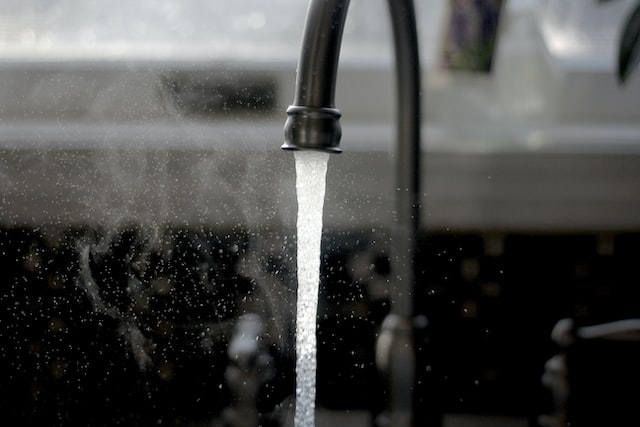
Building a new house necessitates careful planning and thought before beginning the construction process. When creating a new home, you must consider not just the décor but also the plumbing, HVAC systems, and construction materials.
If you build a house without making the proper preparations, it can be unpleasant and difficult. A faulty plumbing system, for example, might lead to leaks and serious water damage in the future. To avoid issues, ensure that plumbing systems are correctly installed.
Here are some good and safe Custom house plumbing in Toronto.
1. Obtain Permits
The first step in establishing a plumbing system is to request and receive the necessary permits. It may take some time, but obtaining permits can assist guarantee that your property satisfies all code restrictions and safety criteria. A permit permits specialists to evaluate and check any flaws in your plumbing design and avoid future pipe breakdowns for your and your family’s safety.
2. Consider Your Plumbing Needs
When building a plumbing system, it is essential to consider both your current and future plumbing demands. To guarantee operation, you must select where your drain lines, plumbing, and sewer will be built. Incorporate all current and future water demands into your plumbing system while you can still conveniently access it and save money on future repairs.
You should also think about your outside plumbing requirements to ensure that you have adequate outdoor plumbing faucet connections to go around your property. Consider the seasons as well to ensure that your pipes are strong and will last even under adverse weather conditions, particularly during the winter.
3. Consolidate the Plumbing System
When establishing a plumbing system, it is critical to instal everything in one location for future maintenance and repairs. The following are some of the appliances you should instal together:
Water Softener
Water Heater
Furnace
Sewer Connection
Sewage Ejector Pit
Sump Pump
You may place these together in the basement because it is the most convenient location for your system and is not an eyesore. If you don’t have a basement, you may place them on the main level and inside a utility closet to keep them hidden.
4. Think about Water Softeners
Installing water softeners in your house would be ideal if you have hard water problems. Even if you don’t have any problems right now, you should consider installing one to ensure that you’ll be able to solve this sort of problem in the future. Water softeners will be difficult to instal in the future, so save money by adding one while building your home.
When installing something for your home, always consider the long term. By planning ahead of time, you may save money and prevent the stress of having to instal new appliances for your system.
5. Sharing on the Wet Wall
When building a house, sharing a moist wall might help you save money. What is a wet wall, exactly? The sewer pipes, water supply lines, and vent stacks are all housed behind a wet wall. Houses generally have separate wet walls to house the pipes in different areas such as bathrooms and kitchens, but you may save money by sharing a wet wall instead. A configuration in which bathrooms share a wall or a kitchen and laundry room share a wet wall is possible.
A shared wet wall might save you money since it reduces the work and resources required to build them. It will also be easier to maintain and repair your plumbing if all of the pipes are in one location.
6. Make a list of the rooms that require water access.
When developing the configuration of your plumbing system, take into account all of the rooms that require water access. The restrooms, kitchen, and laundry room are the three most important locations to consider.
Bathroom
When planning a home, consider how many bathrooms you’ll need, then examine each separately. Will there be a guest bathroom? What, a bathtub? A hot tub? What about a shower? It is advisable to make a list of the amenities your bathroom will have, as well as the necessary toilets and sinks.
Kitchen
When planning the kitchen, take into account the appliances that will be there. Water lines are required for your refrigerator, dishwasher, and sink. You should also think about future improvements, such as installing a kitchen island that will require a plumbing line if you wish to instal a sink in the future.
Laundry Room
Laundry rooms are just as crucial as bathrooms and kitchens. You must position the washer connections correctly so that they are easy to instal and operate. A good drainage line should also be installed in the laundry room to minimise water buildup on the floor when washing clothing.
Aside from these three goals, if you want a garden, an outdoor spa, or a pool, you need also have a good plumbing arrangement. Make a plan for everything, even if you don’t need it right now, to make future instals easier.
7. Easily accessible shut-off location
In case of an emergency, you may want easy access to your primary shut-off valve. While others generally position them in difficult-to-reach spots, you should choose a location with simpler access. This allows you to instantly turn off your plumbing system in the event of a leak, a damaged pipe, or even when doing routine maintenance. If you can readily access your plumbing system’s main valve, you can avoid serious water damage and save money.
Takeaway
Installing new plumbing pipes in the future might be pricey. Avoid excessive expenditure by ensuring that the plumbing system in your new house is designed to fulfil all of your current and future plumbing demands! Make sure you have a safety permit, a centralised plumbing system, and backup water softeners in case they are required in the future. These simple guidelines can assist you in designing a long-lasting plumbing system.





